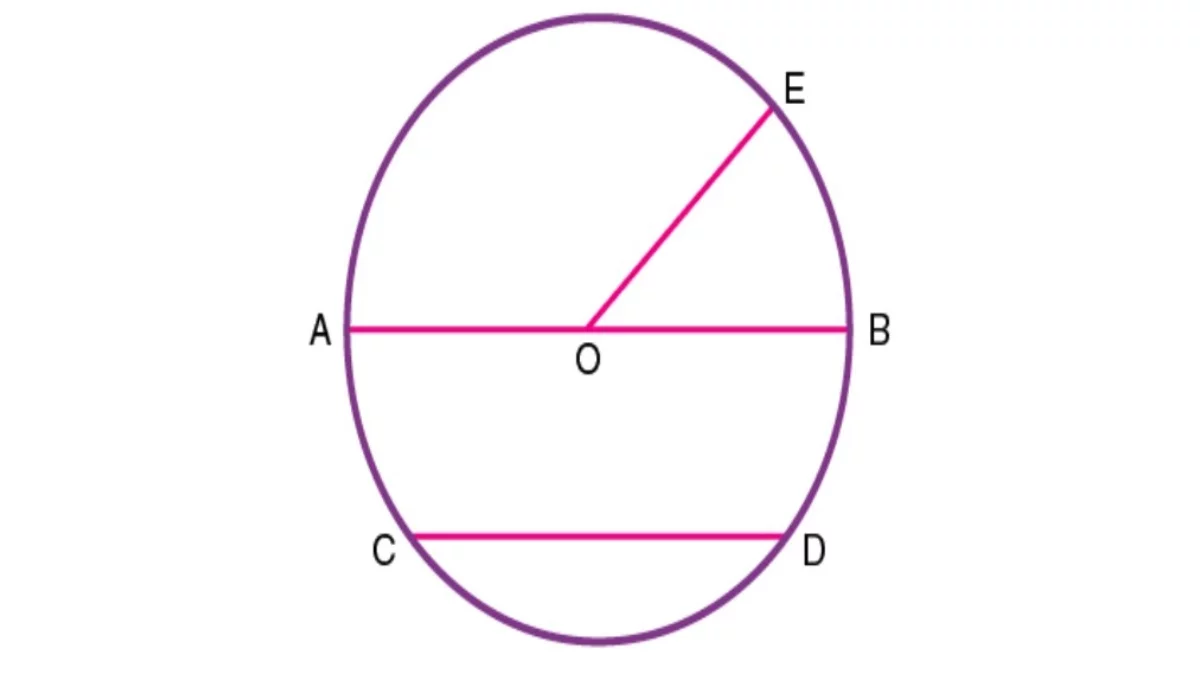Explain the Sector and Chord in a Circle – The word geometry originates from the Greek “geo” defining earth, and “metry,” which defines measurement. In ancient Egypt, geometry was used to measure land so that it could be divided into equal size plots for farming. In this article, we study about a geometric shape circle and about the sector of circle. Talking of Egyptians, they were also skilled at building in stone which required an understanding of how to use compass and straightedge for drawing two-dimensional shapes and three-dimensional solids.
Geometry can be thought of as the generalization of this skill in order to describe any space where lengths, angles, and areas are all measured through numbers based on units such as lines between points, circles with a given radius or diameter, or squares with a given side length. Geometry allows the measurement of regular shapes and figures or figures that are the same from left to right or top to bottom. Hence in geometry, an object is said to be geometrized if it has been described through its geometric features in some way. For example, the shape of an apple or pear may be described with a set of parametric equations. The word “parametric” comes from the Greek “parametrizein,” which means “to assign a length and angle to”. An object’s geometry can then be viewed as a set of instructions for computing its shape after we know the length, angle, and position of each vertex (the points where two edges intersect). For more facts on geometry, visit Cuemath.
Geometry is a mathematical theory that studies the points and lines in spatial figures. To understand circles, you need to know a bit about its definition and what it is. Circles are 2-dimensional, closed shapes. A circle, in mathematics, is a set of points (called the points of closure or circumference) that are equidistant from a given point called the center. In other words, the radius of a circle is all points that are equally distant from the center.
A chord of circle is a line joining any two points on the circumference of the circle that intersects it at different points or a line segment that crosses the circle. A sector of the circle occurs when two chords intersect to form an angle at each end; this is only possible if they also intersect outside of the circle, forming right angles with each other (either both in or both out). When two chords intersect, the intersection is called a central point or cusp.
A sector of a circle is the region bounded by an arc and two radii. The area inside a sector has an angle that measures from 0° to 360°, and it’s sometimes called “angle of the sector” or “angle subtended.” In contrast, the area outside a sector does not have defined limits but might be referred to as “the total unbounded region which does not belong to any particular angle. In other words, the unbounded region is not a sector”.
Chords of the circle and sectors of the circle can be visualized with the help of coordinates too. For a chord, the chord coordinates are given by two perpendicular lines, called the “loci,” that meet at the central point. The loci are called “center” and “extremum.”
Cuemath provides a variety of worksheets on geometry. To get more information on the chord or sector of the circle, specific worksheets relevant to the circle can be downloaded where the students will find hands-on, real-world problems related to circles.

